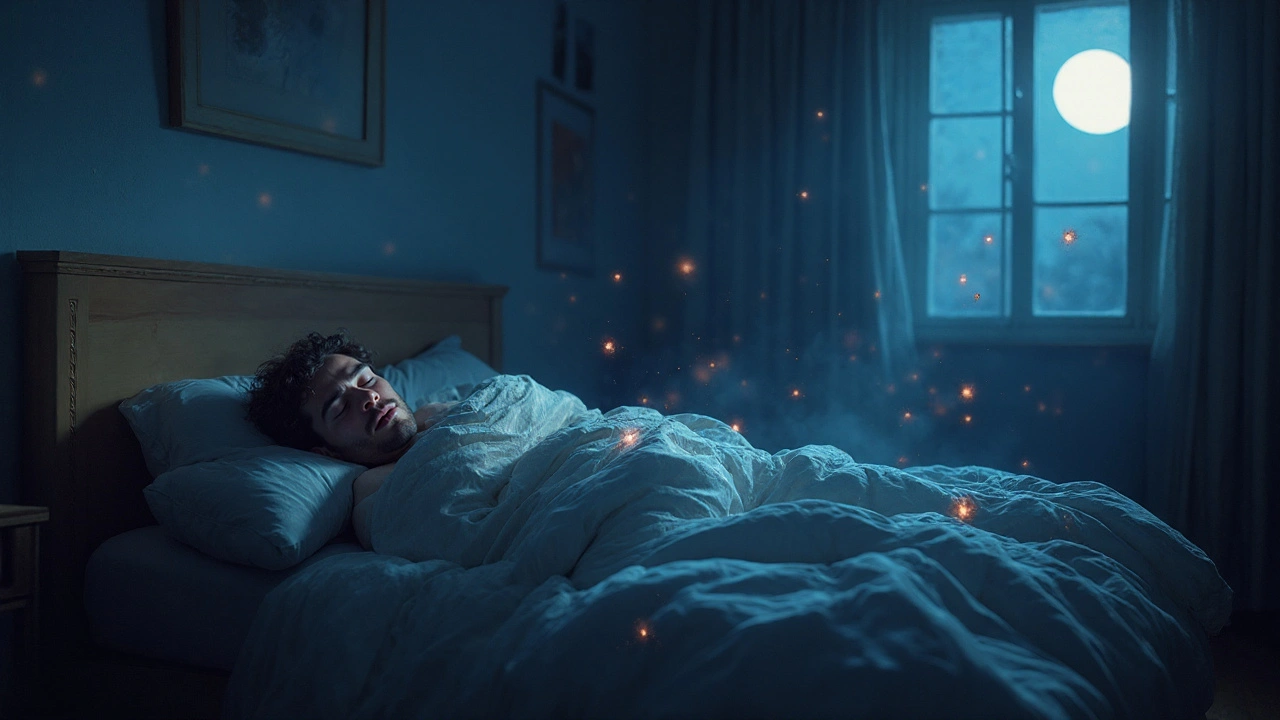
How Infections Trigger Sleep Disorders - The Science Explained
Explore how infections disturb sleep, the biology behind insomnia, apnea and restless legs, and practical steps to protect your rest.
Ever notice how a simple cold can keep you tossing and turning? You’re not imagining it. When your body fights an infection, a whole cascade of signals hits your brain, making it hard to fall asleep or stay asleep.
First off, fever raises your core temperature. Your body tries to cool down by shaking, which feels like chills and makes you restless. At the same time, inflammatory chemicals called cytokines surge. These messengers tell the brain that something is wrong, triggering alertness even when you’re exhausted.
Nasal congestion is another common culprit. Blocked airways force you to breathe through your mouth, drying out your throat and causing snoring or waking up gasping for air. That’s why many people with sinus infections end up with fragmented sleep.
Pain from sore throats, ear infections, or urinary tract infections also keeps the mind on high alert. Even mild discomfort can pull you out of deep sleep, leaving you feeling half‑asleep the next day.
It’s not just the cold or flu. COVID‑19, for example, often brings lingering fatigue and insomnia weeks after the acute phase. The virus can directly affect the nervous system, making the brain’s sleep‑wake switch flicker.
Sleep loss, in turn, weakens the immune system. When you don’t get enough restorative sleep, the body produces fewer white blood cells, which means the infection can stick around longer. It’s a vicious cycle: infection hurts sleep, poor sleep fuels infection.
Stay hydrated. Drinking water, herbal tea, or clear broth helps lower fever and keeps mucus thin, easing congestion and reducing nighttime coughing.
Use a humidifier or take a hot shower before bed. Moist air soothes irritated airways and can cut down on snoring caused by a blocked nose.
Elevate your head with an extra pillow. Gravity helps drainage from sinuses, so you’re less likely to wake up with a stuffy nose.
If fever spikes above 101°F (38.3°C), consider an over‑the‑counter fever reducer like acetaminophen or ibuprofen—just follow the dosage instructions.
Stick to a simple sleep routine: dim the lights, shut off screens 30 minutes before bed, and practice a calm breathing exercise. Even when you’re sick, a consistent cue tells your brain it’s time to wind down.
Avoid caffeine and heavy meals late in the evening. Both can keep your digestive system active and increase heart rate, making it harder to drift off.
Finally, give yourself permission to rest. If you normally need eight hours, aim for six to seven solid hours while you’re ill, and let naps fill the gap. Short naps (20‑30 minutes) won’t mess with nighttime sleep and can boost energy.
Understanding how infections hijack your sleep gives you a roadmap to fight back. With a few practical tweaks—hydration, humid air, temperature control, and a steady bedtime routine—you can break the cycle and let your body recover faster.

Explore how infections disturb sleep, the biology behind insomnia, apnea and restless legs, and practical steps to protect your rest.